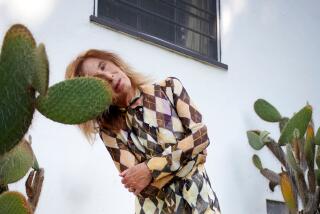Book review: ‘Finders Keepers: A Tale of Archaeological Plunder and Obsession’ by Craig Childs
Finders Keepers
A Tale of Archaeological Plunder and Obsession
Craig Childs
Little, Brown: 288 pp., $24.99
Once upon a time, hiking in the desert, you found an artifact; an arrowhead, a piece of a pot, a fragment of bone. You picked it up, put it in your pocket. Maybe you felt a little twinge of guilt when you moved it, maybe all you felt was the desire to keep that object, to place yourself in the story of which that object was itself only a small part. Whose story? The woman who made the pot? The child whose bone it once was? The man who made the arrowhead? Does it belong to the cultural context — the Pueblo Indians, the Anasazi, the Navajo? Or does it belong to the ecological, geological context?
Whose story?
Craig Childs has spent most of his life asking these questions. Childs is a desert ecologist who also happens to be a fine storyteller. He grew up on the Colorado Plateau and has written several books about his adventures in the desert. Often he finds artifacts, and when he does, he tries to reconstruct the story of their creation and use. He crouches, he walks around, he scribbles in a notebook. Then he leaves the thing where he found it.
Childs’ “Finders Keepers” is a fascinating book, full of swashbuckling pothunters, FBI raids, greasy museum curators who don’t really care and many, many other characters (including ghosts). “This is a book about the underbelly of archaeology, from both a personal and a global perspective,” he explains. But it is not a simple moral tale, as he suggests: “To say the archaeologist is right and the pothunter is wrong seems instinctive, but why? And is it true?”
Childs uses the word “trespass” — which implies an ongoing set of rights, the need for respect and also consequences when rights are violated. He follows the paths of artifacts that have been moved into private collections, museums, universities and glass cases in anonymous buildings. Once, he stole a pot from such a case to return it to the desert. He did not feel entirely good about that. There are pros and cons; in museums, the objects have a longer life. Museums, he writes, are also like the landscape in which he finds objects, places where “lost worlds come back to life.” “They offer an experience close to what I have gotten in the wilderness, ducking behind a boulder to find a hidden jar.”
Childs writes about archaeology and artifacts from other countries and cultures beyond the Southwest — Central America, Tibet and China — and he’s clearly uncomfortable moralizing (though every page in this book screams “Leave it alone!” between the lines). He also admits to times when he wanted badly to keep an object or open a door.
In one of these passages, Childs mentions “a woman named Susan, a senior writer for the Los Angeles Times”: Years ago, when Childs’ book “The Way Out” was published, I traveled to Utah to do a story on him. He was hiking with friends and his wife, Regan, and they let me come along to watch them work. One day, we came across a 13th century household in an alcove in a canyon. We found some cliff dwellings, one room with a hollow floor, a hatch. “By God,” he writes, “you found something important, not bad for a beginner. I did not want to say anything that would cloud this moment for her. She was the one who had found it, not me.” Childs describes how much he both hoped I would leave it alone and how much he hoped I would open it. In the end, of course, I left it.
But here’s the thing: I barely remembered that moment. What I remembered about that trip was a dream in which Pueblo Indians in a full-dress parade tried to coax me into joining them. In the cliff dwelling, I had no idea what was going through Childs’ mind. I had no idea that he would even think it would be possible for me to violate that space — something that would never have occurred to me. Stumbling on that passage was a kind of archaeology. Reading it was like crouching by a pot in the desert, trying to re-imagine a context, finding myself in someone else’s story, clutching a detail that with time had ceased to belong to me.
Childs looks at moral issues from a variety of angles. He doubts others as he doubts himself, a beautiful inverse of the golden rule. He raises questions like the best teachers, the real teachers — have you thought this through? What are the results of your actions? What is your role in this brief chapter?
calendar@latimes.com
Salter Reynolds is a writer in Los Angeles.
More to Read
The biggest entertainment stories
Get our big stories about Hollywood, film, television, music, arts, culture and more right in your inbox as soon as they publish.
You may occasionally receive promotional content from the Los Angeles Times.










